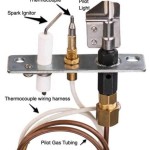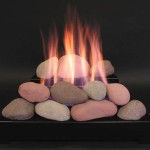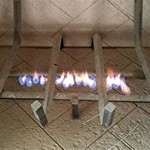Backyard Stone Fireplace Designs: Bringing Warmth and Ambiance Outdoors
A backyard stone fireplace serves as a focal point, transforming outdoor spaces into inviting retreats. It provides warmth on cool evenings and creates an atmosphere conducive to relaxation and entertainment. The enduring appeal of stone, combined with the functionality of a fireplace, makes it a popular choice for homeowners seeking to enhance their outdoor living experience. This article explores various designs for backyard stone fireplaces, delving into the factors that influence their creation and aesthetic integration within the landscape.
Design Considerations: Style, Space, and Functionality
Before embarking on the construction of a backyard stone fireplace, several key design aspects need careful consideration. These elements will directly influence the overall look, functionality, and structural integrity of the fireplace. Neglecting these considerations can result in a fireplace that is aesthetically unappealing, structurally unsound, or functionally inadequate.
Style:
The style of the fireplace should complement the overall architectural style of the house and the design of the outdoor space. Options range from rustic and naturalistic to modern and minimalist. A rustic design might incorporate rough-hewn stones and a more irregular shape, while a modern design might feature smooth, clean lines and a more geometric form. Consider the existing landscaping and hardscaping elements to ensure that the fireplace integrates seamlessly with its surroundings.Space:
The available space is a crucial factor in determining the size and dimensions of the fireplace. A large fireplace in a small backyard can overwhelm the space and make it feel cramped. Conversely, a small fireplace in a large backyard may appear insignificant and fail to provide adequate warmth. Carefully measure the available space and consider the placement of furniture and other outdoor features to ensure that the fireplace is appropriately scaled.Functionality:
Consider the intended use of the fireplace. Will it be primarily used for providing warmth, cooking, or creating ambiance? If cooking is a priority, incorporate features such as a grill, smoker, or pizza oven. If ambiance is the primary concern, focus on the aesthetic appeal of the fireplace and the size of the firebox. The height of the chimney is also important for proper ventilation and smoke dispersal.Fireplaces intended for wood burning necessitate compliance with local regulations regarding emissions and fire safety. Gas-burning fireplaces offer convenience and ease of use but require a gas line installation. Electrical fireplaces do not require combustion and are often available as portable or built-in units.
Stone Selection and Construction Techniques
The choice of stone significantly impacts the aesthetic appeal and durability of the fireplace. Various types of stone are available, each with its unique characteristics in terms of color, texture, and durability. The construction techniques employed are also critical for ensuring the structural integrity and longevity of the fireplace.
Stone Types:
Common stone choices include fieldstone, river rock, flagstone, ledgestone, and cultured stone. Fieldstone and river rock provide a natural, rustic look, while flagstone offers a flatter, more refined appearance. Ledgestone creates a stacked, textured effect, and cultured stone offers a cost-effective alternative to natural stone with a wide range of styles and colors. The selection of stone should consider the desired aesthetic, budget, and availability of materials.Mortar and Dry-Stacking:
Mortar is a mixture of cement, sand, and water used to bind the stones together. It is the standard method for constructing stone fireplaces, providing strength and stability. Dry-stacking involves arranging the stones without mortar, relying on their interlocking shapes and weight to create a stable structure. Dry-stacking creates a more natural and rustic look, but it requires careful planning and execution to ensure stability.The structure of the fireplace will require a foundation, firebox, and chimney. The foundation requires careful consideration. The firebox is the area where the fire will be built, it should be lined with firebrick, a heat-resistant material that protects the surrounding stone from extreme temperatures. The chimney directs smoke and combustion gases away from the seating area, it must be properly sized and constructed to ensure adequate draft and prevent downdrafts.
The overall skill and experience of the mason is crucial for achieving a high-quality result. Incorrect techniques can lead to structural problems, such as cracking, settling, or even collapse. Hiring a qualified and experienced mason is an investment that will ensure the fireplace is built safely and to last.
Design Variations and Customization Options
Backyard stone fireplaces offer a wide range of design variations and customization options, allowing homeowners to create a unique and personalized outdoor living space. These variations can include different shapes, sizes, and additional features that enhance the functionality and aesthetic appeal of the fireplace.
Shape and Size:
Fireplaces can be designed in various shapes, including rectangular, square, circular, and even free-form. The size of the fireplace should be proportionate to the size of the backyard and the seating area. A larger fireplace can create a more dramatic focal point, while a smaller fireplace can provide a more intimate and cozy atmosphere. The shape of the firebox is equally important, affecting the draft, heat radiation, and visual appeal of the fire.Additional Features:
Incorporating additional features can enhance the functionality and aesthetic appeal of the fireplace. These features can include built-in seating, storage for firewood, mantels, hearths, and decorative elements. Built-in seating provides a comfortable and convenient place to relax and enjoy the warmth of the fire. Storage for firewood keeps the fuel readily accessible and adds to the rustic charm of the fireplace. Mantels and hearths provide a decorative surface for displaying plants, candles, or other decorative items. Decorative elements, such as stone carvings, wrought iron accents, or tile mosaics, can add a touch of personalization and visual interest.Outdoor Kitchen Integration:
A stone fireplace can be integrated into an outdoor kitchen to create a complete outdoor cooking and entertaining space. The fireplace can be incorporated into a larger structure that includes a grill, countertops, sinks, and storage cabinets. This creates a functional and aesthetically pleasing outdoor space that is perfect for hosting gatherings and enjoying meals outdoors.Customization can extend to the choice of materials used in and around the fireplace. Pavers, flagstone, or gravel can be used to create a patio around the fireplace, defining the seating area and providing a comfortable surface for walking. Landscaping can be used to soften the edges of the fireplace and create a natural and inviting atmosphere. The choice of plants, shrubs, and trees can complement the style of the fireplace and provide shade, privacy, and visual interest.
Incorporating lighting in and around the fireplace will enhance its functionality and aesthetic appeal. Landscape lighting can be used to highlight the stonework and create a warm and inviting glow. String lights, lanterns, or sconces can be used to add ambiance to the seating area. Firelight itself provides natural lighting and adds to the cozy and relaxing atmosphere of the outdoor space.
The placement of the fireplace is also a critical consideration. Ideally, the fireplace should be situated in a location that provides shelter from the wind and offers a view of the surrounding landscape. Consider the prevailing wind direction when determining the orientation of the fireplace to minimize smoke blowing into the seating area. The view from the seating area should be considered as well, ensuring that the fireplace offers a pleasant and inviting focal point.
Regulations regarding fireplace construction and usage vary by locality. Contacting the local planning and building departments is essential to determine specific requirements for permits, setbacks, and emissions. Compliance with these regulations ensures that the construction process is legal and that the fireplace operates safely and efficiently.
Proper ongoing maintenance of a stone fireplace is essential for its longevity and performance. Regular cleaning of the firebox and chimney is necessary to remove ash, soot, and creosote, which can accumulate over time and pose a fire hazard. Inspecting the stonework and mortar regularly for cracks or damage is crucial to prevent structural problems. Addressing any issues promptly will help to extend the life of the fireplace and ensure that it continues to provide warmth and enjoyment for years to come.

Outdoor Fireplace Design Ideas Getting Cozy With 10 Designs Unilock

30 Outdoor Fireplace Ideas Cozy Fireplaces

Outdoor Fireplace Design Ideas

25 Stone Fireplace Ideas For A Cozy Nature Inspired Home Chimeneas Diseño De Chimenea Cocina Al Aire Libre

Natural Stacked Stone Veneer Fireplace Ideas

Amazing Fire Pit Outdoor Fireplace Ideas Natural Brick Stone Depot

Standout Stone Outdoor Fireplaces

Stonetutorials Living Stone Masonry

Traditional Stone Outdoor Fireplace With Brick Oven And Grill Designs Backyard Patio

How To Build An Outdoor Stacked Stone Fireplace








